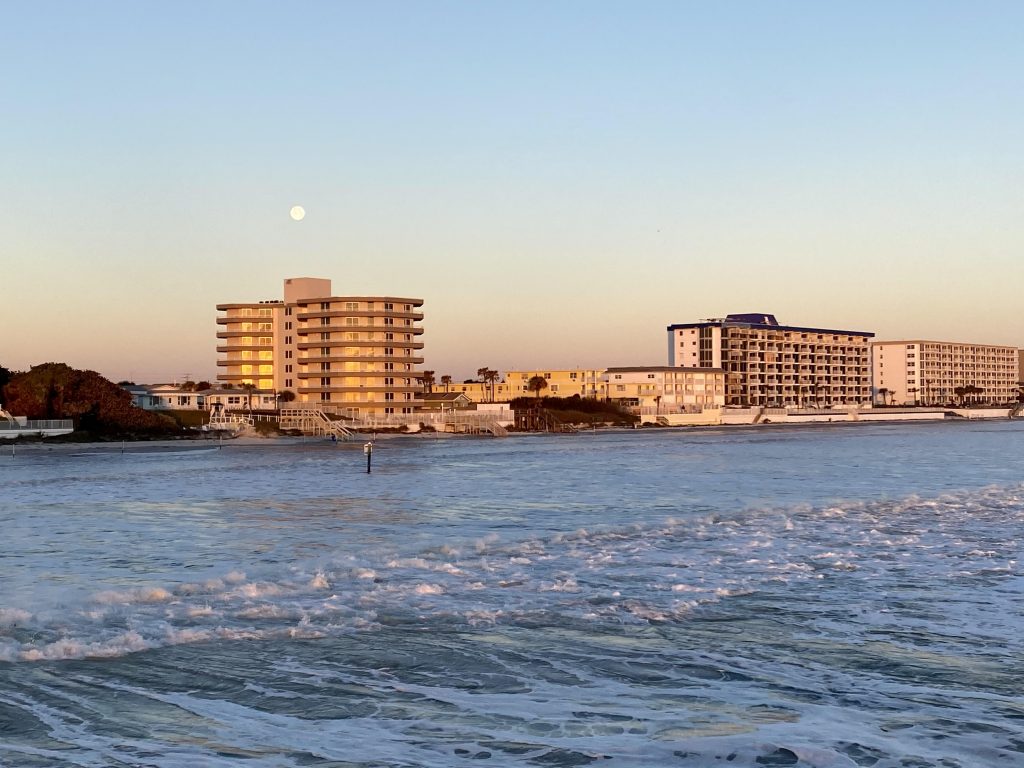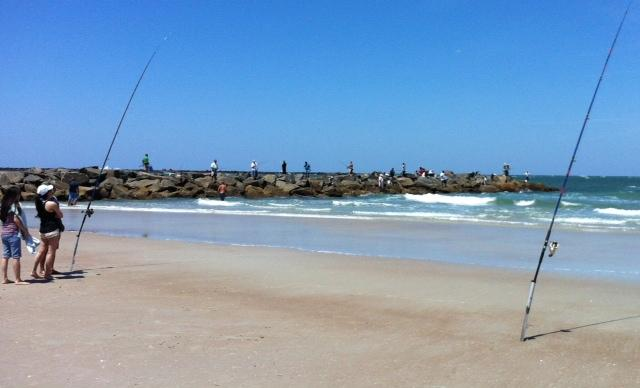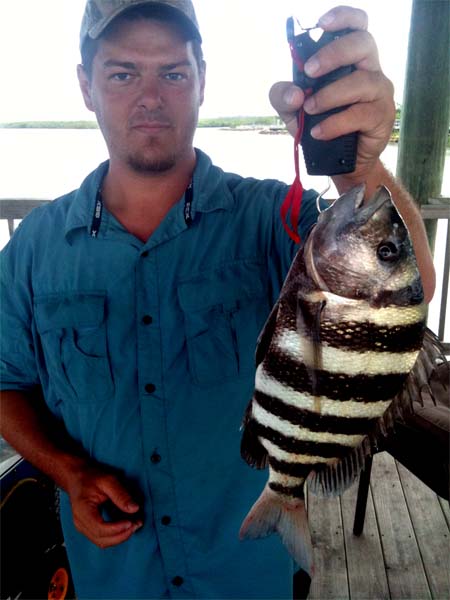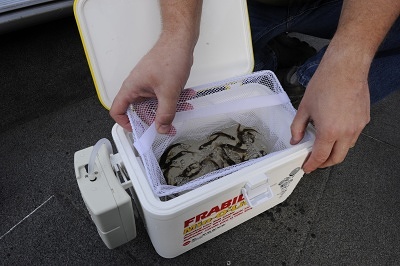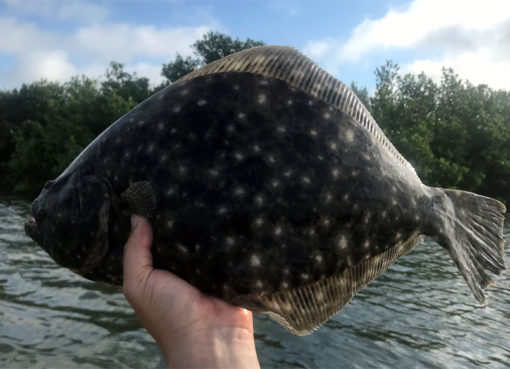Surf fishing techniques are as varied as the anglers that use them, but there are a few basic surf fishing techniques that are used by most anglers that will help anglers find and catch more fish…
Recon
“Short for Reconnaissance: preliminary surveying or research”
Before the Fishing Trip
Surveying any surf region that you plan on fishing at low tide before your fishing trip will help you find the best places to catch fish. When walking the beach look for areas that have Dips, Hollows, Sandbars and any structure that is driving tide or current. When surf fishing, high tide is normally the best time to find fish feeding, but it is also the most difficult time to find where the structure, troughs and any other fish attractants are.
If the beach has two surf breaks note how deep the trough is and watch for any activity in this area. The trough is typically the best place to catch fish from the surf. Fish will use the troughs as highways while moving around and they will also hang out in the trough waiting for the breaking surf to dig bait out of the sand or confuse a bait fish.
Day of the Fishing Trip
When you first arrive to the beach there are a few things you should be looking for:
- Find the through – Sand bars are what normally cause waves to break, and over time they move. Make sure to locate where the through is and if there is one.
- Bait fish activity – Look for any signs of bait fish schooled up. They will often be near the surface and will either look like a large shadow or a shiny reflection. The bait fish will often be observed jumping to avoid predators.
- Watch for bird activity – When fish are actively feeding on a school of fish birds will often be circling above and diving into the action. Birds are almost always a good indicator of fish activity!
- Look for Rip Currents – Rip currents are relatively narrow current flowing outward from the beach through the surf zone. Fish will often hang outside of these currents and ambush prey that gets caught up in them.
Surf Fishing Rigs
There are two primary rigs that are used when fishing from the surf, the fish finder rig and the double dropper loop rig.
Fish Finder Rig
The fish finder rig is also commonly referred to as the Carolina rig. It is basically a hook on the end of a leader (12-20″ works great for surf fishing) that is attached to a barrel swivel. Above the barrel swivel on the main line is a bead and a sinker. The sinker can either be an egg sinker for light to no current days or a pyramid sinker for days with a little more current. This rig is by far the best if live bait fish are to be used as it allows them to move around in a more natural manner.
Double Dropper Loop Rig
This rig has the weight at the bottom with 2 loops with hooks on the end of the loops at about 8-12″ intervals above the weight (more loops and hooks can be added as well). This rig works great with frozen bait or live sand fleas. When using a dropper loop rig, putting different types of bait on each hook until the preferred bait of the day is found can lead to more fish caught.
Another advantage to the dropper loop rig is when the fish are running heavy it is not uncommon to catch more than one fish at a time. Because of the potential for multiple fish, the line used should be a little heavier than needed normally!
Amount and Type of Weight
The amount of weight used should only be enough to hold the bottom in the current you are fishing or enough to get your cast far enough to reach the intended fishing area. Using more weight than needed will negatively affect the presentation of the bait as well as the sensitivity of your line. There are three main types of weights used when fishing from the surf:
Egg Sinker
Egg sinkers are really only used in one of two rigs, the fish finder and the knocker (where an egg sinker is put on the main line directly above the hook). Egg sinkers are a great option when there is not a lot of current. They allow for the bait on the end of the line to move in a more natural manner and in slight current they will gently roll along the bottom allowing the bait to cover more ground.
Pyramid Sinker
Pyramid sinkers are exactly what they sound like. They are a weight shaped like a pyramid. With a point at the bottom and four corners at the top. These weights are great for grabbing a hold of the bottom in light to moderate current and they are available in weight ranging from 1/8 of an ounce up. These are often used in both the fish finder and the dropper loop rigs.
Sputnik Sinker
A sputnik sinker is shaped like a tear drop but with 4 long spikes sticking out of the sides causing it to resemble the Russian satellite. These are used almost exclusively in a dropper rig and are excellent at holding the bottom in moderate to high current. The draw back to these sinkers is the can bury themselves in the bottom making it difficult to set the hook on a fish.
How to Choose Line
There are three primary concerns when selecting the type of line you plan on using. Line diameter, strength and castability.
The diameter of the line will determine how much current and wind will affect the line. The strength of the line will not only determine how large of a fish that can be caught, but also how much weight can be reliably cast. And finally castablity can be a vital factor as often times when surf fishing long casts are required.
There are 3 types of line to consider when surf fishing; Braid, Monofilament and Fluorocarbon.
Braided Line
Braid excels at all primary concerns for surf fishing line. It has the smallest diameter, is exceedingly strong and highly castable. The disadvantages of braided line are that it does not stretch. is highly visible in clear water conditions and is the most expensive of the options. If using a high quality leader, these disadvantages are heavily out weighed by its advantages and is the preferred line for most surf fishing situations.
Monofiliment
Monofilament is the second best line for surf fishing. It has great flexibility, good stretch. near invisibility, good casting distance and is the most affordable of the options. The down side to monofiliament is the lack of strength compared to the other options.
Fluorocarbon Line
Flourocarbon line ranks low on the list of line options. While it is nearly invisible in the water and offers great strength and abrasion resistance, it is fairly stiff which greatly reduces its casting distance. Flourocarbon, however, is the BEST option for leaders.
Bait
Live and frozen bait are the most frequently used options when surf fishing. Lures can be successful, but not at near the rate that frozen and live bait can produce. The most successful baits for surf fishing include:
- Live Shrimp
- Live or Frozen Sand Fleas
- Live or Frozen Clams
- Live finger mullet
- Other live bait fish
Casting
When surf casting the main consideration is accuracy. You want your bait to land in the strike zone. When casting use what ever technique gives you the most accuracy. Practice overhead casting, side arm casting, underhand casting and everything in between. Determine which style gives you the best combination of accuracy and distance. When distance is the only concern, a strong overhead cast can almost never be beat!
Hooking a Fish
Because of the long casts and heavy weights that are often required to get a bait into the strike zone setting the hook on a fish can sometimes be difficult. The long length of a surf fishing rod comes in handy here.
Once a strike is detected use a firm upward motion at a moderate speed to set the hook. Do not move the rod tip to quickly as this could pull the hook out of the fishes mouth or even worse, snap the line leaving the hook stuck in the fish. After setting the hook keep the rod tip high and reel the fish in.
*** If you are using circle hooks, do not set the hook. Simply lift the rod tip up, with a gentle but deliberate motion, and reel the fish in. These hooks are designed to catch the fish in the corner of the mouth and setting the hook aggressively can easily pull the hook from the fishes mouth ***
Landing a Fish
After a fish is hooked it is time to land the fish. Many times anglers will simply drag the fish up on to the beach, which is fine if the fish is going to be harvested. If the fish is to be released or if you are unsure of it size simply walk into the water a little over ankle deep and land the fish with a net or a fish gripper. Pulling a fish on to the sand removes its slime coating and can lead to serious injuries! Protect the resource the best you can!
Basic Surf Fishing Helpful Links
